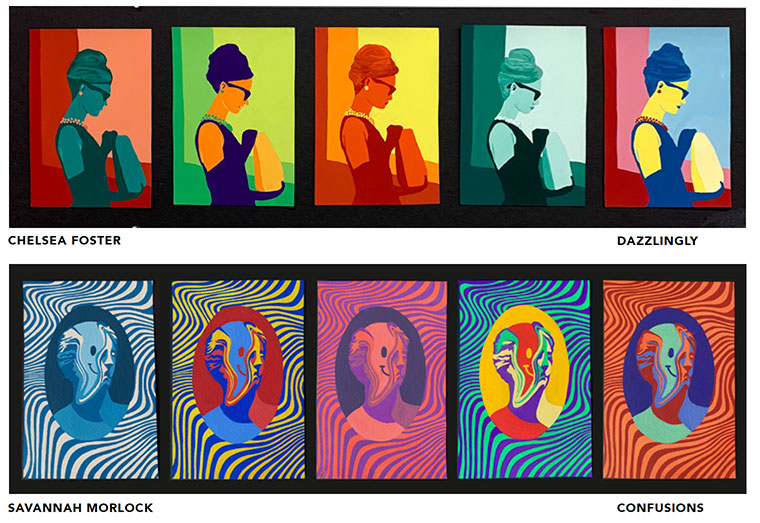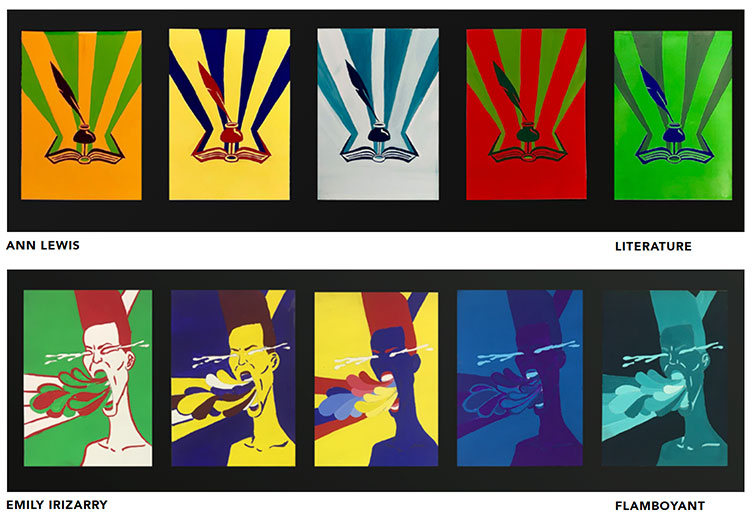Fancy Color Wheel
Students learn about the profound complexity of color by studying the history, philosophy, physiology and the practice of mixing gouache paint. The first assignment is to create a value scale with as many steps as they can only using black and white paint (achromatic gray scale). With the fancy color wheel, students take Johannes Itten’s 12-step color wheel and make it their own. At the bottom, students mix complementary hues together toward a neutral in the middle creating a chromatic value scale.
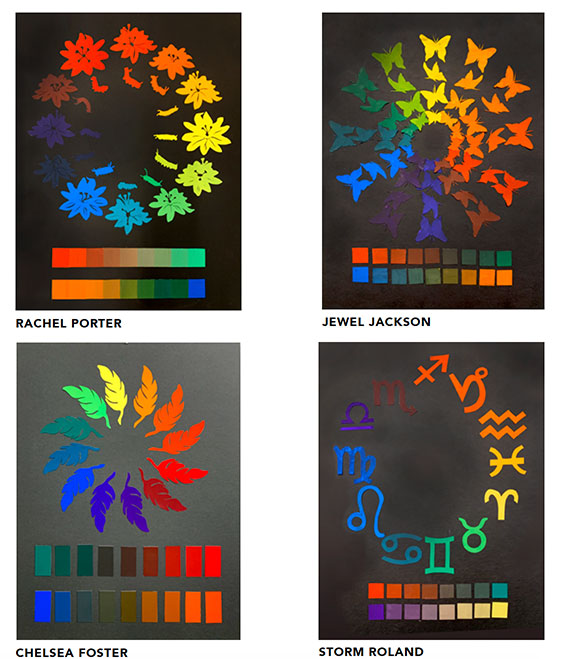
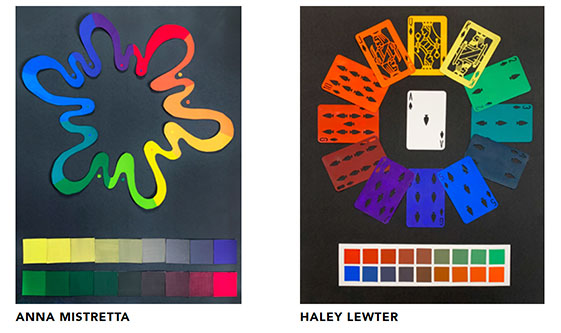
=============================================
Psychological Self Portrait
After reading about Psychological Effects of Color by Paul Zelanski and Mary Pat Fisher as well as others like Leatrice Eiseman of Pantone, students are to select a pair of emotional concepts that are opposite. For example: happy/sad, love/fear, sullen/elated, good/bad. The first part is to take two color studies using a passive format based on any grid configuration to form color analogues of the emotional concepts. The second part is to apply the color studies to a self portrait.
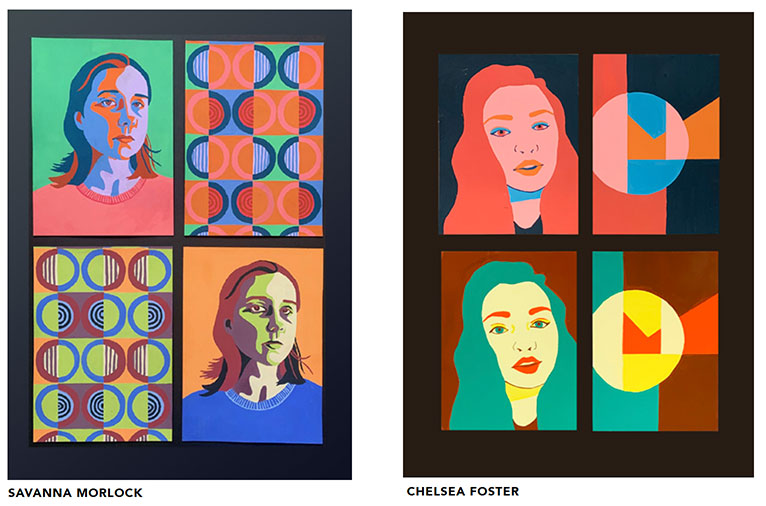

===============================
Color Constancy, Retinex and Chromatic Adaptation Tables
Students are given a copy (among other documents on color perception) of Edwin Land’s 1971 Scientific American article about his Retinex theory. He said that we need both the retina and the cortex, both the eye and the brain to perceive color. Since color perception is subjective, students are asked to paint the same scene at three different times of the day. This exercise provides a welcome alternative to creating flat areas of color as performed in the previous assignments of making value scales, one color look like two and two colors to look like one (à la Josef Albers’ Interaction of Color).
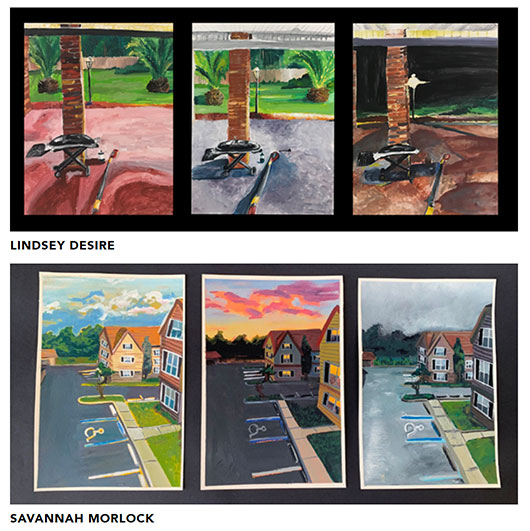
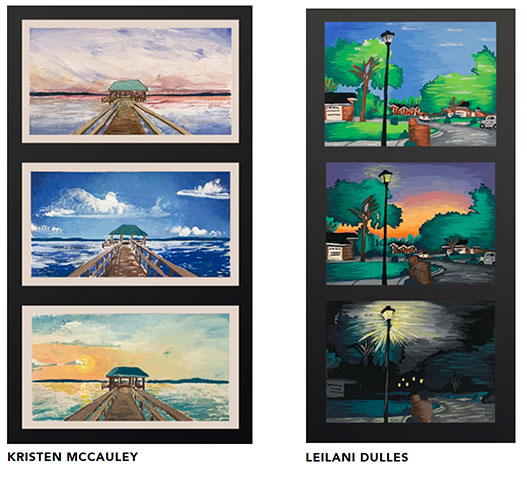
==============================
Ten-Letter Word in Five Color Schemes
Students are asked to pick a ten-letter word, define it, research it, then create a design and execute it in five different color schemes (such as monochromatic, analogous, complementary, split complementary, triadic, tetradic or double complementary and quadratic). These are executed in gouache paint on 5 x 7 inch bristol board then mounted on black presentation board.
